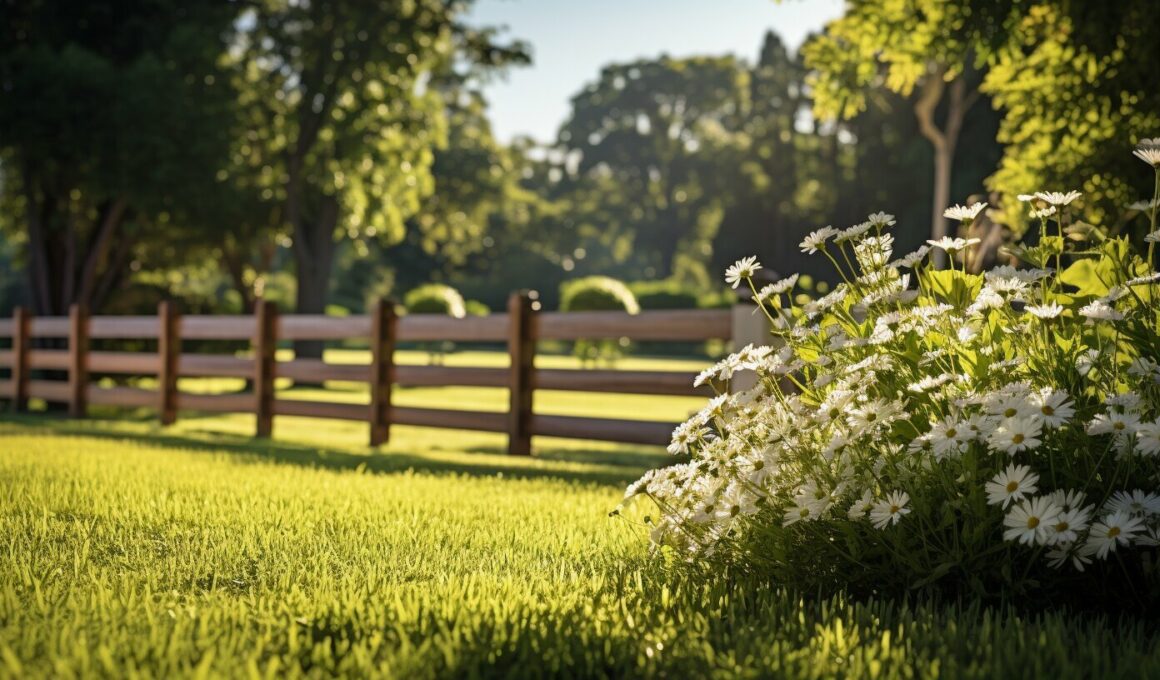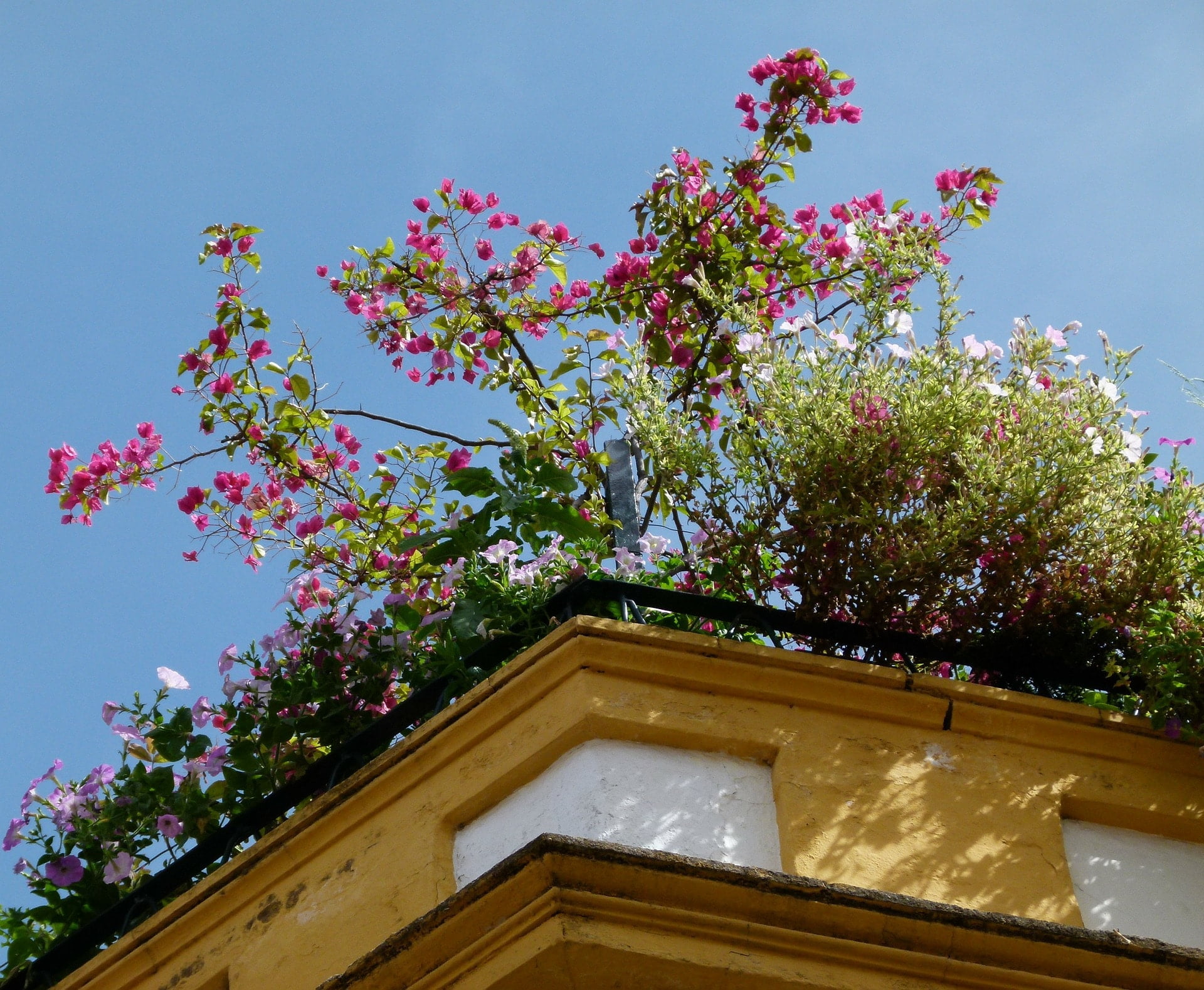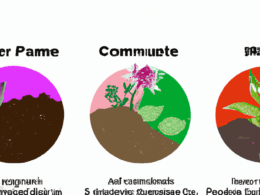Have you ever looked out at your lawn and noticed that some patches of grass are a different shade of green than others? While it might seem like a minor detail, the color of your grass can actually give you important insights into the health and condition of your lawn.
Understanding the reasons behind different grass shades can help you identify potential problems and take action to maintain a beautiful, vibrant lawn. While there are many factors that can impact grass color, from sunlight to soil composition, it’s important to have a basic understanding of these factors to get a better understanding of your lawn.
In this article, we’ll explore the science behind grass color variations, the impact of external factors like fertilizer and watering, and some advanced tips for enhancing the color of your grass. Whether you’re a seasoned lawn care professional or just starting out, this guide will provide you with the knowledge you need to achieve a healthy, uniform lawn.
The Science Behind Grass Color Variations
Have you ever wondered why the grass in your lawn can vary in shades of green? The answer lies in the science behind grass color variations. A combination of factors influences the color of grass, including chlorophyll, soil composition, and sunlight.
Chlorophyll is the pigment responsible for giving plants their green color. During photosynthesis, chlorophyll absorbs light and converts it into energy. The more chlorophyll a plant has, the greener it appears. Therefore, healthy grass with more chlorophyll will have a darker, more vibrant green color.
Soil composition also plays a significant role in determining the color of grass. Soil pH levels, nutrient content, and moisture levels can impact the plant’s ability to absorb nutrients and produce chlorophyll, affecting the color of the grass. For example, an overly acidic soil can inhibit a plant’s ability to absorb iron, leading to yellowing or browning of grass blades.
Sunlight is another crucial factor affecting grass color. Different types of grass require different levels of sunlight to thrive. Some varieties prefer full sun exposure, while others do better in partial shade. The amount of sun exposure a lawn receives can affect the grass’s ability to produce chlorophyll, ultimately impacting its color.
The Impact of Chlorophyll on Grass Color
The more chlorophyll a plant contains, the greener it appears. Therefore, to promote vibrant, healthy green grass, it’s essential to ensure that the lawn receives adequate nutrients. Fertilizing the lawn with nitrogen-rich fertilizers can help boost the chlorophyll production in the grass blades, leading to a more intense green color. However, it is crucial not to over-fertilize, as this can cause damage to the lawn and result in a weakened root system.
The Role of Soil Composition in Grass Color Variations
The soil’s pH level is crucial to healthy grass growth and color. If the soil is too acidic or alkaline, it can inhibit the plant’s ability to absorb nutrients, leading to yellowing or browning of grass blades. Therefore, it’s essential to test the soil’s pH level regularly and amend it accordingly. Adding lime to acidic soil can help raise its pH level, promoting healthy grass growth and a vibrant green color.
The Impact of Sunlight on Grass Color
The amount of sunlight a lawn receives can affect the grass’s color. Grass that receives too little sun may turn yellow or brown, while grass that gets too much sun can become stressed and turn a lighter shade of green. Therefore, it’s critical to choose the right grass variety for the level of sun exposure in the lawn. In addition, proper watering techniques can help ensure that grass receives the right amount of moisture to thrive in its environment.
Understanding the Different Hues of Grass
Grass comes in a variety of different shades of green, and these variations can have a significant impact on the overall aesthetic of a lawn.
The color of grass can be influenced by a range of factors, including the variety of grass, the region in which it is grown, and the amount of sunlight and water it receives.
Some grass varieties, such as Kentucky bluegrass, have a darker shade of green, while others, such as fescue, have a lighter, brighter green hue.
The choice of grass color is often a matter of personal preference, but it is important to consider the surrounding landscape when selecting a grass variety. For example, a deep green lawn may look better against a backdrop of darker foliage or against a brightly colored garden.
If you are looking to achieve a specific hue for your lawn, it is important to choose a grass variety that matches that color. Different varieties of grass are better suited for different regions and climates, so it is important to consult with a local expert before making a final selection.
To ensure that your lawn maintains a consistent color throughout the growing season, it is important to fertilize and water your lawn properly. The use of high-quality fertilizers and targeted watering techniques can help to promote healthy grass growth and maintain a vibrant, uniform color.
Factors Affecting Grass Color
The color of grass can be affected by several factors, including:
- The amount of sunlight the grass receives
- The variety of grass
- The quality and type of soil
- The pH level of the soil
- The amount and frequency of water
To ensure that your lawn maintains a consistent color, it is important to monitor these factors and make adjustments as needed. For example, if your lawn is not receiving enough sunlight, you may need to adjust the surrounding landscape to allow for more direct sunlight. Similarly, if your soil is too alkaline or acidic, you may need to add lime or other soil amendments to adjust the pH level and promote healthy grass growth.
The Impact of Fertilizer and Watering on Grass Color
Proper fertilization and watering techniques can have a significant impact on the color and health of your lawn. Understanding how to effectively use these methods can help you achieve a vibrant, uniform lawn.
The Role of Fertilizer
Fertilizer provides essential nutrients that grass needs to grow and maintain its green color. Nitrogen is the most important nutrient for promoting healthy grass growth and color. Without enough nitrogen, grass blades will turn yellow or brown and may begin to die off.
When applying fertilizer, it’s important to follow the recommended guidelines for your specific grass type. Over-fertilizing can cause stress to your lawn and lead to other problems. Additionally, it’s best to apply fertilizer in the early morning or late afternoon when the sun is not too strong to prevent damage to the grass.
The Impact of Watering
Water is essential for maintaining healthy grass growth and color. However, over or under-watering can cause issues with grass color. Over-watering can lead to yellowing or browning of grass blades, while under-watering can cause the grass to become dormant or die off.
When watering your lawn, it’s best to do so early in the morning or late in the evening when temperatures are cooler and evaporation is lower. Additionally, it’s important to water deeply and infrequently rather than frequently and shallowly. This encourages grass roots to grow deeper, resulting in a healthier lawn.
Conclusion
Fertilizer and watering are two crucial components for achieving a vibrant, uniform lawn. Proper application of these techniques can help promote healthy grass growth and maintain a consistent green color. However, it’s important to follow recommended guidelines for your specific grass type and to avoid over or under-fertilizing and watering. By using these techniques effectively, you can achieve a beautiful, healthy lawn that stands out in your neighborhood.
The Role of Temperature and Sun Exposure
The temperature and amount of sun exposure that a lawn receives have significant impacts on the color of the grass. In general, most grasses prefer temperatures between 60-75°F (15-24°C) for optimal growth. Extreme heat or cold can cause grass blades to wilt or discolor, resulting in brown or yellow patches throughout the lawn.
Additionally, the amount of sun or shade that a lawn receives affects the color of the grass. Grasses that receive too much shade may not produce enough chlorophyll, resulting in a yellowish or lighter green hue. On the other hand, grass that is exposed to too much sun may become stressed, resulting in a brown or burnt appearance.
The Impact of Seasonal Changes
Seasonal changes can also have a significant impact on the color of grass. As temperatures fluctuate throughout the year, the grass may go through periods of dormancy or growth. During dormant periods, the grass may appear brown or yellow, while periods of growth may result in a brighter green color.
It’s important to adjust lawn care practices according to seasonal changes. For example, during periods of dormancy, it’s important to reduce watering and fertilization to avoid damaging the grass. During periods of growth, it’s important to ensure the grass is receiving enough water and nutrients to support healthy growth and vibrant color.
Maintaining a Healthy Lawn
To maintain a healthy and vibrant lawn, it’s important to pay close attention to the temperature and sun exposure that the grass is receiving. Consider planting grasses that are well-suited for the local climate and ensure that the lawn receives adequate watering and fertilization according to seasonal changes.
Additionally, consider providing shade for areas that receive too much sun exposure, and prune trees and bushes to allow more sunlight into areas that receive too much shade. By taking a proactive approach to lawn care and paying attention to the factors that affect grass color, it’s possible to create a beautiful and uniform lawn that adds value to any property.
Common Lawn Problems That Affect Grass Color
While we all strive for a lush, green lawn, there are several common problems that can negatively impact grass color. Recognizing and addressing these issues early on can help to prevent further damage and maintain a healthy, uniform lawn.
Pests
Various pests, such as grubs and chinch bugs, can damage grass roots and cause yellow or brown spots in the lawn. Regular monitoring and appropriate treatment can help to prevent and control pest infestations, ultimately preserving the color and health of your grass.
Diseases
Fungal and bacterial diseases, such as rust and dollar spot, can also cause discoloration and damage to grass blades. Proper lawn care practices, such as regular watering and mowing, can help to prevent the spread of these diseases. In some cases, fungicides may be necessary to treat more severe infections.
Weeds
Weed growth can also impact grass color and uniformity. Weed control measures, such as herbicides and manual removal, can help to eliminate these intruders and maintain a pristine lawn appearance.
Nutrient Deficiencies
A lack of necessary nutrients, such as nitrogen, can cause grass to yellow and lose its color. Applying a targeted fertilizer with the correct balance of nutrients can help to promote healthy grass growth and vibrant color.
Overwatering or Underwatering
Inconsistent watering practices can also affect grass color. Overwatering can lead to yellowing and mold growth, while underwatering can cause grass blades to dry out and turn brown. Proper watering practices, such as deep, infrequent watering, can help to prevent these issues and maintain a consistent green color.
Improper Mowing
Mowing too low can damage grass roots and cause discoloration, while mowing too high can create a patchy appearance. Regular mowing with a sharp blade at the appropriate height can help to maintain a lush, uniform lawn.
By staying vigilant and addressing these common lawn problems early on, you can help to preserve the color and health of your grass. In some cases, seeking the advice of a professional lawn care service may also be beneficial in preventing and treating these issues.
What is the Difference Between Scotch Moss and Irish Moss?
When it comes to scotch moss versus irish moss comparison, one notable difference lies in their origin. Scotch moss, also known as Sagina subulata, originates from Europe and is a bright green perennial. On the other hand, Irish moss, scientifically called Chondrus crispus, is a seaweed found along the rocky coasts of the North Atlantic.
Solutions for a Vibrant, Uniform Lawn
To achieve a beautiful, uniform lawn with consistent grass color, there are several solutions that can be implemented. Here are some effective tips:
Selecting the Right Grass Variety
Choosing the right grass variety for your lawn is crucial in achieving the desired shade of green. Some grass varieties naturally have a deeper, darker green color, while others may have a lighter, brighter shade. Consider your region, climate, and the amount of sunlight your lawn receives when selecting the best grass variety for your lawn.
Optimizing Watering and Fertilization Practices
Watering and fertilization are key factors in maintaining a healthy, vibrant lawn. Watering should be done in the morning, at a time when the sun is not too strong, to prevent the evaporation of water. Fertilization should be done regularly and according to the needs of the specific grass variety. It’s important to avoid over-fertilizing, as this can cause burning of the lawn and lead to yellow or brown spots.
Maintaining Healthy Grass Growth
Maintaining healthy grass growth is crucial in achieving and maintaining a vibrant, uniform lawn. Regular mowing, weeding, and edging can help to promote healthy grass growth and prevent the growth of weeds that can negatively impact the color of the grass.
Regular Maintenance
Regular maintenance is key in keeping your lawn looking its best. This includes regular mowing, watering, and fertilization, as well as treating any problems that arise promptly. It’s also important to aerate and dethatch your lawn regularly to promote healthy grass growth and alleviate compacted soil that can negatively impact grass color.
Professional Lawn Care Services
Professional lawn care services can provide additional assistance in achieving optimal grass color for your lawn. They can provide expert advice on grass variety selection, fertilization, watering, and maintenance practices, as well as offer services such as overseeding, aeration, and dethatching to enhance the overall health and color of the lawn.
Advanced Tips for Enhancing Grass Color
If you’re looking to take your lawn to the next level, there are several advanced techniques you can use to enhance the color and health of your grass.
Overseeding
Overseeding involves spreading additional grass seed over an existing lawn to help fill in bare spots and promote thicker, more uniform growth. This technique can also help to introduce new grass varieties that may exhibit a more desirable hue. The best time to overseed is typically in the fall, when temperatures are cooler and there is less competition from weeds.
Aeration
Aeration involves punching small holes in the soil to help promote better air and water circulation. This can help to reduce soil compaction and promote healthier root growth, leading to better grass color and overall lawn health. Aeration is typically recommended once or twice per year, depending on the condition of your lawn.
Dethatching
Dethatching involves removing the layer of dead grass and other organic material that can accumulate on top of the soil over time. This layer can prevent water and nutrients from reaching the roots of your grass, leading to yellowing or browning of the blades. Dethatching can be done using a specialized rake or machine, and is typically recommended once every few years depending on the condition of your lawn.
Landscaping and Decorative Elements
Strategic use of landscaping and decorative elements can help to enhance the color and overall aesthetic of your lawn. Consider adding hardscaping features such as stones or pavers, or incorporating colorful annuals or perennials into your landscaping design. These elements can help to create contrast and provide a visual “pop” that can complement the natural green hues of your grass.
By incorporating these advanced techniques into your lawn care routine, you can achieve a vibrant, healthy lawn that is the envy of your neighbors. Consult with a professional lawn care service to determine the best strategies for enhancing the color and health of your grass!
FAQ – Common Questions About Grass Color Variations
Q: Why is my grass turning yellow?
A: There are several reasons why grass may turn yellow, including overwatering or underwatering, nutrient deficiencies, and pest infestations. It’s important to diagnose the underlying issue and take appropriate action to restore the health and color of your lawn.
Q: Does the type of soil affect grass color?
A: Yes, soil composition can have a significant impact on grass color. Soil that is too acidic or alkaline can inhibit nutrient absorption by the grass, leading to yellowing or browning of the blades. Testing soil pH and adding appropriate amendments can help to promote healthy grass growth and color.
Q: Can mowing affect grass color?
A: Yes, mowing practices can impact grass color. Mowing too short can stress the grass and cause it to turn yellow or brown. It’s important to mow at the appropriate height for your grass variety and to regularly sharpen mower blades to prevent damage to the grass blades.
Q: Can shade affect grass color?
A: Yes, lack of sunlight can cause grass to turn yellow or pale green. It’s important to choose shade-tolerant grass varieties for areas with limited sunlight and to ensure adequate watering and fertilization to promote healthy growth.
Q: How often should I water my lawn?
A: The frequency and duration of watering will depend on factors such as climate, soil type, and grass variety. A good rule of thumb is to water deeply and infrequently, allowing the top few inches of soil to dry out between waterings.
Q: Can fertilizer burn cause yellowing of grass?
A: Yes, over-application of fertilizer or application during hot, dry weather can cause fertilizer burn, leading to yellowing or browning of grass blades. Follow recommended application rates and timing to prevent damage to your lawn.
Q: Does grass color indicate overall lawn health?
A: Grass color is an important indicator of lawn health, but it’s not the only factor to consider. Other factors such as grass density, disease and pest resistance, and root health also contribute to overall lawn health.









